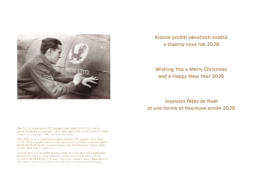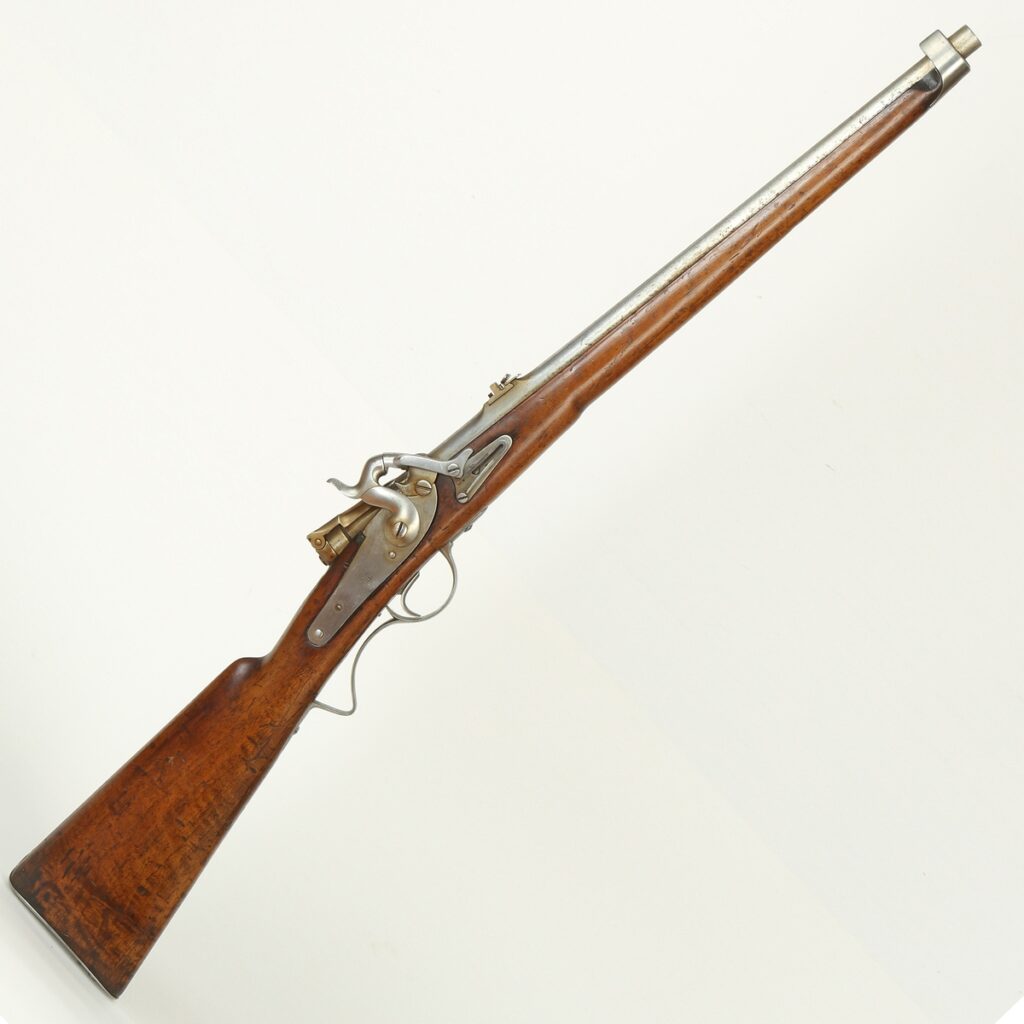
17 Saxon Cavalry Carbine 1865 Model
Fotogalerie
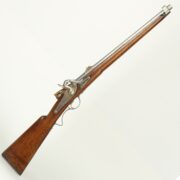
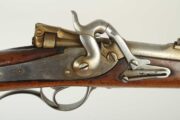


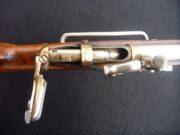
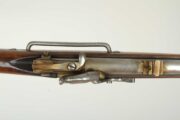
The Saxon cavalry carbine is undoubtedly the least known weapon that appeared in the armaments of armies in the Czech territory during the Austro-Prussian War of 1866. It is a percussion single-shot breech-loader with a cylindrical rotating breech, which is a modified version of the design created by Englishman William Terry. In literature, the Saxon carbine is sometimes referred to as the Drechsler system. R. Drechsler was one of the two manufacturers of this carbine. The Saxon Army numbered over 26,000 men in 1866. The carbine was intended exclusively for the cavalry, which at that time consisted of four regiments in Saxony. In total, there were 2,574 cavalrymen and 2,600 carbines were ordered for them. Of these, 600 were supplied by the rifle maker R. Drechsler from Bärenstein in Saxony, and 2,000 carbines were made by Spangenberg & Sauer in Suhl.
The carbine has a cylindrical 13.9 mm calibre barrel with four right-hand grooves. The front sight is protected by an end sleeve; the rear sight has two folding plates. The percussion lock is fitted with a folding piston safety, the lock plate bears the manufacturer’s symbol of SP.&SR. SUHL. The breech housing has a cut-out at the top for inserting a cartridge, covered by a movable flap which, when raised, served as the breech handle. Uniform cartridges were used with an expanding Podewils bullet and powder charge in a paper case. The fire produced by the strike of the cock on the primer had to pass through the piston, burn through the cartridge case, and then ignite the powder charge within it.
The Saxon cavalry carbine Model 1865 was used in our territory during the war of 1866, but it did not see long service. As early as 1868, it was scrapped and replaced in the Saxon armaments by the Prussian carbine – a needle carbine model 1857.
Length 905 mm, barrel length 503 mm, calibre 13.9 mm, weight 2,762 g.
Aktuálně
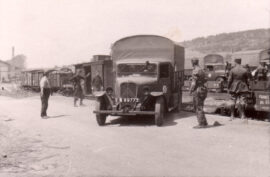
Oceňovaní spojenci - Pozemní útvary československé branné moci v bitvě o Francii očima francouzského velení

Vánoce a přelom roku v zahraniční misi na Slovensku v roce 2022

Prosinec 1944 – oficiální vydání prvních poštovních známek osvobozeného Československa


